This little-looking game packs a tonne of tactical depth.
To download the app, you will get links to the Official Website and/or official digital markets.
02/01/2024 toolmxh.com
Review game Into The Breach, This little-looking game packs a tonne of tactical depth.
- Subcribe me update video daily: https://bit.ly/IGGGamesReviews
A basic grid of eight by eight can accommodate a great deal of tactical depth. Subset Games’ Into The Breach, the sequel to the cult classic FTL: Faster Than Light, offers an amazing array of turn-based tactical combat between your squad of three mechs and enormous, city-destroying kaiju monsters. I find myself scratching my head and wondering how I’m going to survive this mess every time I read Into the Breach. And when I do on a couple of those occasions, it’s an exciting moment.
Into The Breach’s vibrant and simple pixel-art graphics style may be mistaken for a standard, basic mobile game, despite its delicately detailed animations. I sincerely hope the game will be released on phones so I can play it wherever I go. Using an XCOM-like one move, one attack per turn system that has become common since 2012, the majority of levels involve moving your units into position to shoot, punch, bombard, push, or otherwise affect the waves of monsters that erupt from the ground. However, mastering the subtleties of its battle system is one of the most rewarding tactical experiences I’ve had in years due to the way its countless clever rules interact with one another.

Every decision you make feels significant during one of Into the Breach’s semi-roguelike runs (there is no saving and reloading if something goes wrong), especially after you’ve played a while and discovered some new starting options. The first group of mechs are the basic Rift Walkers, who have an artillery unit that damages a tile and knocks back all nearby tiles, a tank with a damaging knockback shot, and a basic melee bot with a damaging knockback punch. Each squad of three mechs has a different set of abilities. But after that, you can unleash the Blitzkrieg, who have a Hook Mech that grapples and moves enemies next to it and a Boulder Mech that launches massive rocks that deal damage, push back adjacent units horizontally, and have the ability to block a tile. The Lightning Mech has an electrified whip that hits everything next to its target in an endless chain of damage. Alternatively, there are the Frozen Titans and Flame Behemoths, whose specialisations are probably obvious to you but have some interesting twists that make them fun to play with. In order to create entirely new tactics, you can even assemble your own team by combining mechs from any of the ones you’ve unlocked.
By waiting to engage in more difficult battles until you’re ready, you can significantly increase your chances.
Furthermore, before you even start upgrading your team, you get to choose one special pilot from an unlockable set of 13, who gives a special ability to whatever mech you assign them. This increases the number of possible starting combinations significantly. Abe Isamu’s armour feature, for instance, will offset the damage the Zenith Guard’s Charge Mech, which is capable of ramming opponents from a great distance, would inflict on the mech if it were used. If positioned correctly to avoid movement, placing Silica in the Boulder Mech allows you to launch two long-range attacks in a single turn, effectively blocking two squares. (The other two pilots you begin each run with are essentially disposable, but they can level up and earn experience points to receive little bonuses.)
The next step is to choose, after giving it some thought, which of the four islands you’ll visit first. Each has generally consistent terrain conditions: For example, the wintery island always has breakable ice and freezing storms; the green island has water and flammable vegetation; the desert island has dunes that can produce dust clouds when struck; and the tech island is home to acid pools and conveyor belts. However, each game will present a different set of enemies, including a boss that you must choose which members of your squad are most capable of defeating. I avoid slugs that launch spider eggs because I detest them so much; they entrap nearby units before spawning an additional enemy that you have to deal with. I wait to upgrade my units until I can better handle those slugs. Additionally, it’s rarely a good idea to take on the dividing blob boss early if I’m using a squad that doesn’t deal a lot of direct damage. By waiting to engage in those more difficult battles until you’re ready, you can greatly increase your chances.

When you’re on an island, you choose which areas to fight in according to their risks, side objectives, and natural hazards. You also choose which areas to finish in order to gain access to other areas you desire (since you can only attack nearby territories). You must choose carefully because you can only engage in five fights on each island before the boss shows up. Should you concentrate on obtaining power for your grid, which is essentially your total health, as a defence against future damage, or should you aim to get as many upgrade points as you can? And is attempting to do both at once worth taking on more difficult missions?
Combat Chess
Naturally, the real action happens on the battlefield. Every turn is a clever puzzle about how to stop monsters from hitting important targets or, better yet, how to deflect monsters’ attacks back at their allies by nudging them around the map. This is because enemies always move first and telegraph their attacks. Your move could make or break the order of operations. By holding down the Alt key, you can reveal the order in which enemies will attack. With this feature, you can create scenarios where an enemy seems to pose a threat to a target, but you know it will be eliminated by another enemy before it can strike. However, depending on the kind of attack, hitting an opponent with a smack will frequently cause them to move to a different tile. If you didn’t account for this, you could easily prevent yourself from making a subsequent move you had planned. Until you’ve mastered everything, there will always be unanticipated events. For example, you might not have considered the sand dune on a square that, when attacked, produces a dust cloud that prevents you from attacking from that position.
It’s therefore great that you can undo as many moves as you like until you attack and that you can reset time to the beginning of the turn once per mission (unless you have Isaac Jones with you, in which case you get another one). This lessens the pain of learning difficult lessons significantly and permits at least a little save-scum experimentation before committing.

However, safeguarding the civilian buildings on the tactical maps can be more crucial than ensuring the survival of any mech because they serve as a representation of your general health, or what’s known as the power grid, and any amount of damage to them will end your run. Therefore, it’s usually preferable to take the damage yourself, even if it means losing a mech pilot and having to replace them with an AI that cannot level up and instead grants random benefits like extra hit points or increased movement range. Part of Into the Breach’s complex balancing act is knowing when to sacrifice a machine by putting it in the way of a threat and when to take the hit to your power grid.
Part of the intricate balancing act in Into the Breach is knowing when to sacrifice a mech and when to take the hit to your power grid.
Additionally, in Into the Breach, randomness is only applied to civilian buildings because they have an opportunity to fend off damage when struck. After maxing out your power grid metre, you can earn more power, which will raise your odds from the starting low of 15%. There are no crucial hits, unanticipated misses, or events that aren’t hinted at beforehand. Everything else is certain. That puts it almost completely in the realm of fairness, with the possibility of something going your way being the only variable.
The short mission maps in Into the Breach aren’t created at random, but there are elements that give them a unique feel each time. One way to prevent one from feeling too similar to another is to include a wide range of side objectives, like guarding a moving train, eliminating every mountain on the map with an acid launcher, or freezing and shielding two hostile robots. There are certain maps with natural hazards that you can take advantage of. For example, there are tidal waves that wipe out an entire row every turn, which you can use to kill non-flying enemies without endangering your mechs. There are also lightning storms that destroy everything on four randomly selected tiles every turn, and ice storms that freeze anything that is standing in a large area at the end of a turn. Additionally, there’s a chance that a Time Pod will crash-land on the map, posing a challenge for you to either gather them or stop the enemy from destroying them before the mission is over in order to gain rewards like additional upgrade resources, new special pilots, or new abilities. Given that a mission typically lasts five turns, there’s a lot of pressure to complete all of the objectives quickly.
I’ve been playing this tiny-looking tactics game more intently than most large ones.
The two-phase final mission is a little underwhelming because it proceeds in a manner that is remarkably similar to the boss battles you have already faced. It took me more than a dozen tries to finally beat it, and on multiple occasions, I was within one turn of doing so before failing, so it’s clearly not easy. However, after a few attempts, it’s beginning to feel like the most routine aspect of Into the Breach. Fortunately, by the time you arrive, your squad will likely have acquired significantly different skills, ensuring a distinct approach to combat.
The musical score composed by Ben Prunty for FTL should not be overlooked, as it features a comparable low-fidelity electronic style. It’s comparable in that it’s great for creating a sci-fi atmosphere and doesn’t get old quickly. I could listen to it nonstop.
Conclusion
The tactical combat in Into the Breach is deep, satisfying, and replayable due to the large range of mech and pilot abilities. Every turn brings a new, challenging riddle to solve, and while there’s never a perfect answer, as you learn to maximise the abilities at your disposal, figuring out the best way to minimise damage frequently leads to epiphanies. I’ve been playing this tiny-looking tactics game more intently than most large ones.

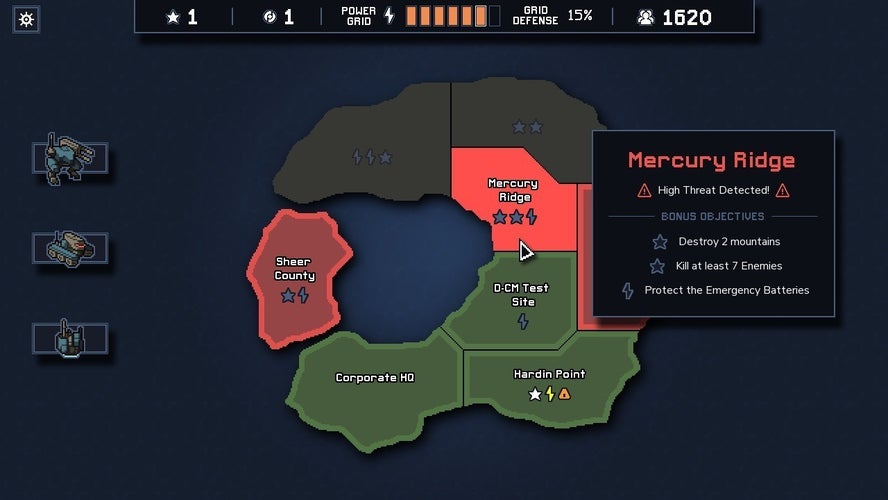
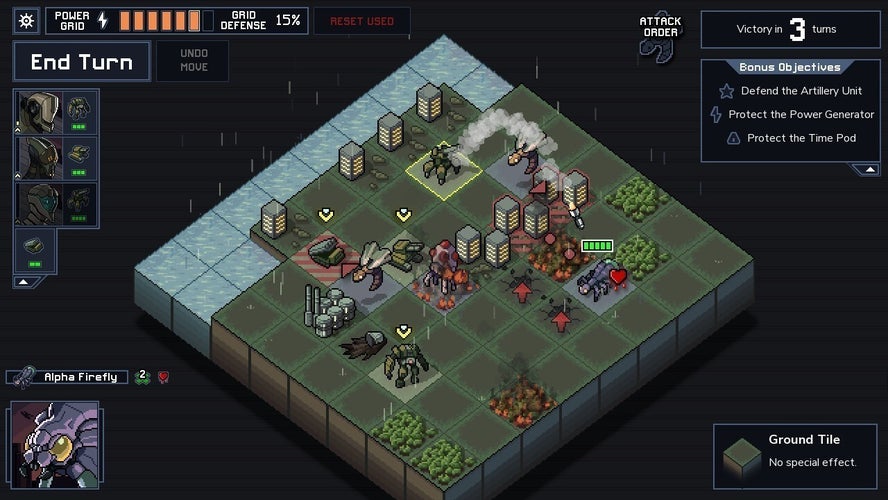
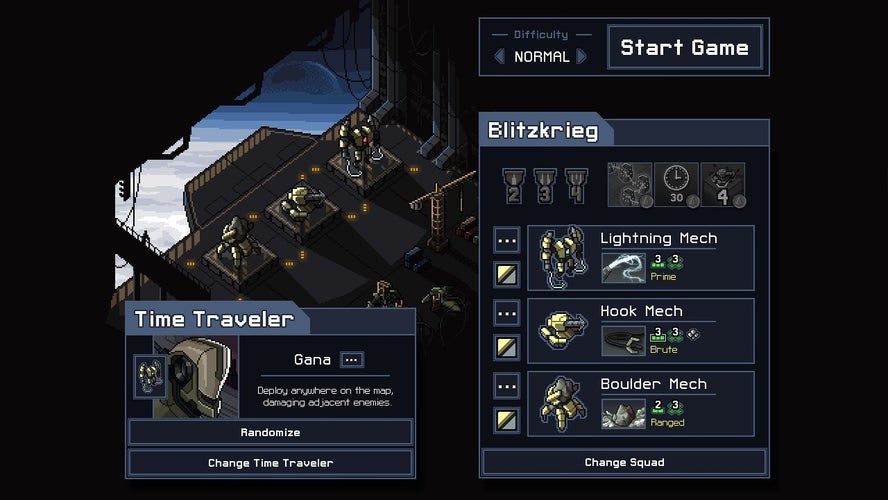
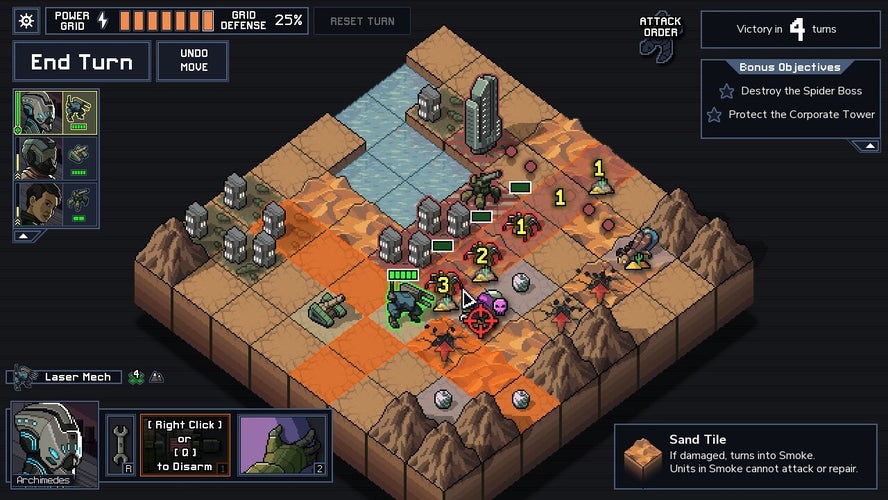
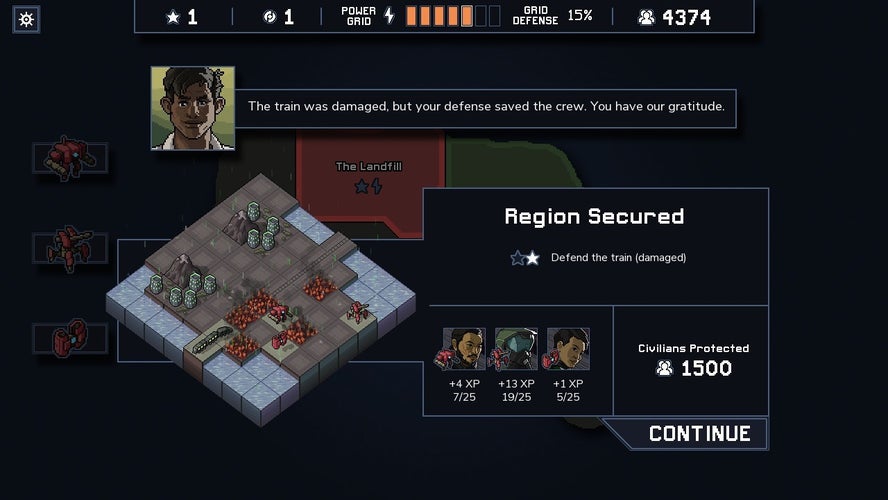
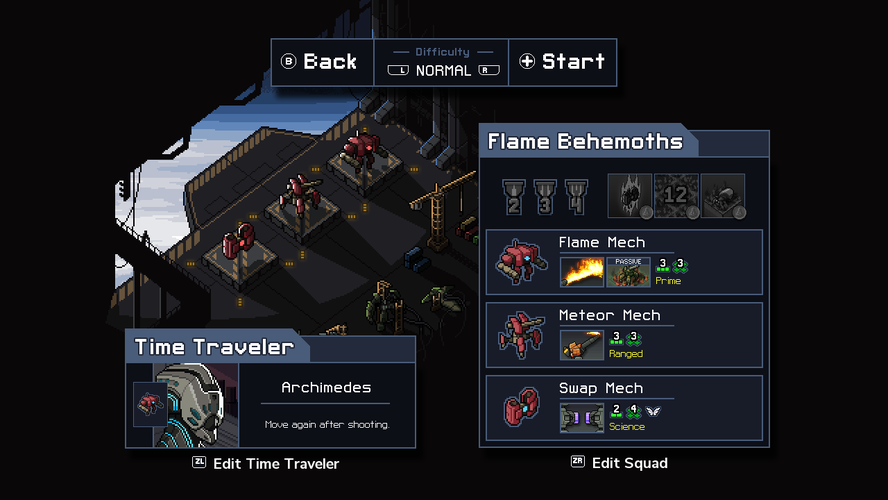







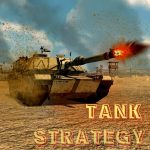


















Comments (0) for Review game Into The Breach